We may earn money or products from the companies mentioned in this post.
How to Transition Your Winter Wardrobe to Spring: 5+ Essential Pieces for a Spring Look
As winter fades and the promise of warmer days approaches, it’s time to refresh your wardrobe. A well-planned transition from winter to spring involves layering, swapping heavier fabrics for lighter ones, and incorporating brighter colors.
Start by assessing your winter pieces. Identify items that can seamlessly transition, such as lightweight sweaters or versatile jackets, and consider how to mix and match them with spring essentials.
Revamping your wardrobe for spring can be as simple as adding a splash of color or incorporating floral patterns. With a bit of creativity, you can step into the season feeling fresh and stylish.
Understanding Seasonal Wardrobe Transitions
Transitioning your wardrobe from winter to spring involves strategic planning. Start by assessing your current collection. Identify which winter pieces can be repurposed or stored away.
Key Elements to Consider:
- Weather Variability: Spring often brings unpredictable weather. Layering is crucial, so keep lightweight sweaters and cardigans accessible.
- Color Palette: Transition to lighter, brighter colors. Incorporate pastels and floral patterns to reflect the spring season.
- Fabric Choices: Replace heavy fabrics with breathable options. Fabrics like cotton and linen are ideal for spring.
Steps for Transitioning:
- Sort Clothing: Separate items you will wear in spring from winter clothes.
- Layer Wisely: Combine long-sleeve tops with lighter jackets.
- Accessorize: Use scarves and lighter footwear to enhance your spring outfits.
Assessing Your Current Winter Wardrobe
Begin by evaluating your current winter clothing. Take everything out of your closet and drawers. Lay items out where you can easily see them.
Next, categorize your winter pieces. Use the following groups to help you:
- Essentials: Items you wear frequently.
- Occasional Wear: Pieces you use for specific events.
- Unused: Clothing that hasn’t been worn in the last season.
Ask yourself these questions for each item:
- Condition: Is it in good shape, or does it need repairs?
- Fit: Does it fit well, or have you made size changes?
- Style: Does it reflect your current taste?
After sorting, identify key winter staples that can transition into spring. Focus on lightweight fabrics and neutral colors. This can help create a streamlined wardrobe for the warmer months.
Finally, take note of items you will donate or toss. This makes room for fresh spring additions while minimizing clutter.
How to Transition Your Winter Wardrobe to Spring: 5+ Essential Pieces for a Spring Look
Key Pieces to Transition From Winter to Spring
Certain wardrobe staples will help you ease into spring while retaining warmth as the seasons change. Focus on layering essentials, versatile outerwear, and lightweight knitwear to adapt your style effectively.
Layering Essentials
Layering is crucial for the transition from winter to spring. Start with a basic long-sleeve tee or a thin turtleneck as your foundation.
Consider incorporating button-up shirts for versatility. They can be worn alone, layered, or tied around the waist when temperatures rise.
Choose breathable fabrics like cotton or linen to stay comfortable throughout the day. They keep you warm in the morning and cool as the sun rises higher.
Versatile Outerwear
For outerwear, select pieces that adapt to fluctuating temperatures. A lightweight trench coat is ideal, offering protection from spring showers without overwhelming you.
Another solid option is a denim jacket, which pairs well with almost any outfit. Its versatility allows you to wear it over dresses, jeans, or skirts.
A moto jacket in lighter materials can add a chic edge. Look for soft leather or a similar alternative that can transition through seasons and elevate your look comfortably.
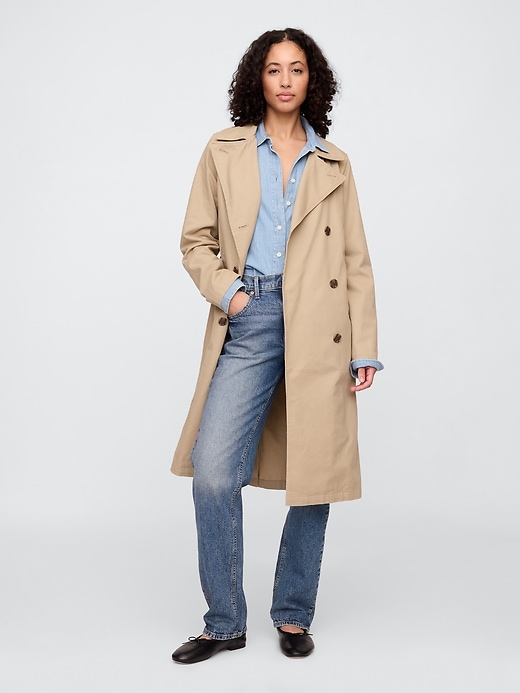
Shop: Gap Modern Trench Coat, $119.99
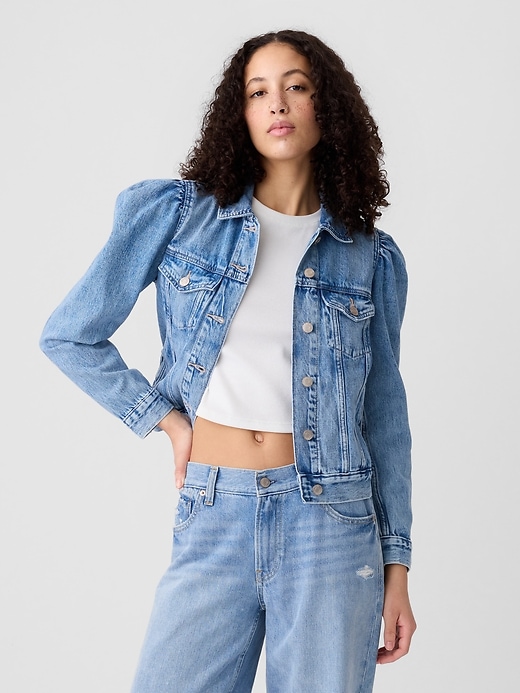
Shop: Gap Puff Sleeve Denim Jacket, $89.99
Shop: Anthropologie The Saige Faux Leather Moto Jacket, $98
Lightweight Knitwear
In spring, wear lightweight sweaters that offer warmth without heaviness. Cotton or linen blends are great choices for breathable styles.
Cardigans are versatile layering pieces, easily removed throughout the day. Choose longer lengths that can be worn open for a relaxed aesthetic or belted for shape.
Knit vests are fashionable options for transitional weather. Layer them over shirts or dresses to add depth to your outfits while maintaining a fresh spring look.
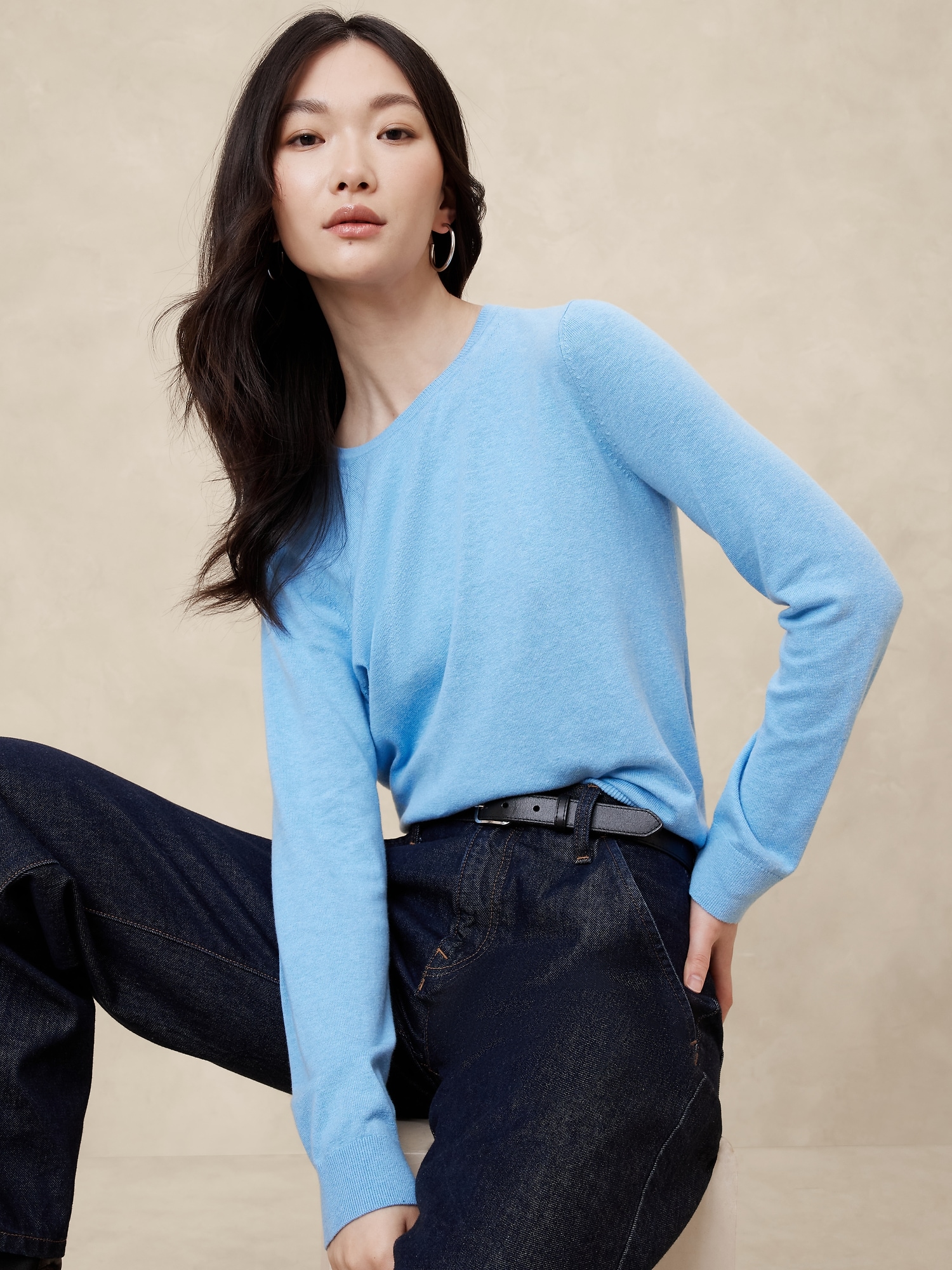
Shop: Banana Republic Forever Crewneck Sweater, $60

Shop: Gap Long Open-Front Cardigan, $59.99
Shop: Anthropologie Sweater Vest, $98
Incorporating Spring Colors and Patterns
As winter fades, it’s time to brighten your wardrobe with spring colors and patterns. Incorporate lighter hues to create a fresh look. Think soft pastels like mint green, blush pink, and sky blue.
Colors to Consider:
- Pastels: Light lavender, baby yellow, soft coral
- Brights: Bold orange, vibrant teal, sunny yellow
Patterns can also play a significant role. Florals are a classic choice for spring. You can use floral prints on dresses, tops, or skirts.
Pattern Ideas:
- Floral: Perfect for dresses or blouses
- Stripes: Offers a nautical vibe, suitable for casual wear
- Polka Dots: Fun and playful, great for any age

Shop: Lulus Floral Dress, $88
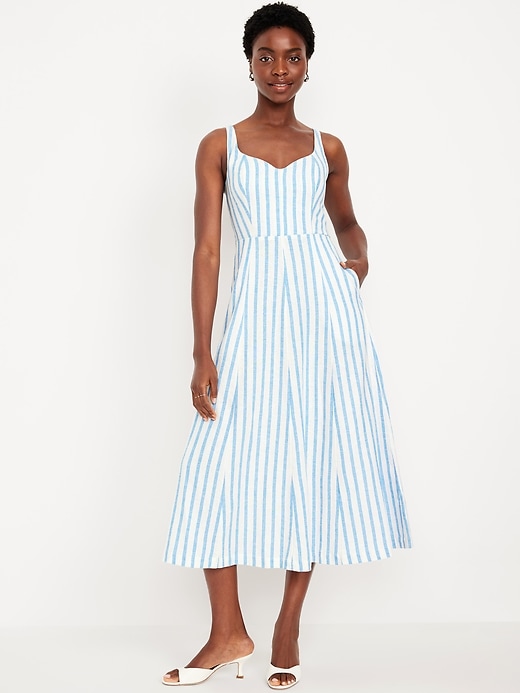
Shop: Old Navy Fit & Flare Linen Dress, $49.99
Layering is key, so mix and match colors and patterns. Pair a floral top with solid-colored pants. This balance allows you to showcase your style without overwhelming your look.
Don’t shy away from accessories. A floral scarf or a statement necklace can add a pop of color to a neutral outfit.
As you transition, remember that lighter fabrics also enhance spring vibes. Look for cotton, linen, and breathable blends to keep your outfits comfortable and stylish.
Storage Solutions for Off-Season Clothing
Storing off-season clothing properly helps maintain its quality and extends its lifespan. Here are some effective storage solutions:
- Choose the Right Containers: Use plastic bins or breathable fabric bags. Avoid cardboard as it can attract pests.
- Clean Before Storing: Wash or dry clean your items before storage. This prevents stains from setting and removes odors.
- Organize by Category: Sort your clothes into categories, such as tops, bottoms, and outerwear. This makes it easier to find items when seasons change.
- Utilize Vacuum Bags: For bulkier items, vacuum bags can save space. They compress clothing while protecting it from moisture and dust.
- Add Cedar or Lavender Sachets: These natural options keep moths away and add a pleasant scent to your stored clothes.
- Avoid Hangers for Long-Term Storage: Instead, fold clothes to prevent stretching. Hanging sweaters can cause them to lose shape.
- Label Your Containers: Clearly label bins for quicker access. Include the contents and the season to streamline your organization.
- Choose a Cool, Dry Location: Store items in a climate-controlled environment. Avoid basements or attics that experience extreme temperatures.
Shopping Tips for Spring Wardrobe Additions
As you look to refresh your wardrobe for spring, consider these effective shopping tips.
1. Assess Your Current Wardrobe:
Evaluate what you currently own. Identify pieces that can transition to spring and what you may need to replace.
2. Focus on Versatility:
Choose items that can be layered or worn in multiple ways. Look for pieces like light cardigans, versatile tops, and breathable fabrics.
3. Pay Attention to Trends:
Stay updated on spring trends by browsing fashion websites or magazines. Key trends this spring include pastel colors, floral patterns, and oversized fits.
4. Create a Shopping List:
Make a list of needed items. This helps avoid impulse buys and keeps your purchases aligned with your style goals.
5. Set a Budget:
Determine how much you want to spend. Sticking to a budget helps manage your finances while still updating your style.
6. Take Advantage of Sales:
Look for seasonal sales or clearance items. You can find great deals on essential spring pieces.
7. Stick to Quality:
Invest in quality staples that will last. Look for durable fabrics and classic designs that suit your style.
Combining Winter and Spring Pieces Creatively
Transitioning your wardrobe involves mixing and matching items from both seasons. Start by identifying versatile pieces that work in varying temperatures.
Use lightweight turtlenecks under your winter sweaters for extra warmth. Combine thicker fabrics with lighter ones to achieve balance.
Consider this list:
- Winter coats: Pair with spring dresses for a chic look.
- Scarves: Use lightweight options to add texture to winter outfits.
- Boots: Transition to ankle boots with cropped pants as the weather warms.
Incorporate spring colors into your winter wear. For instance, try pastel accessories with a darker winter outfit to brighten your look.
A floral blouse under a structured winter coat creates an eye-catching contrast. You can effortlessly blend styles by choosing complementary colors.
Combine denim jackets with wool skirts for a unique ensemble. Different materials add depth and interest to your outfit.
Transitioning doesn’t mean discarding winter favorites; it’s about innovative pairing. Use your creativity to redefine your wardrobe. This method helps you stay stylish while adjusting to warmer days.
Accessorizing for a Spring Look
Transitioning your wardrobe means updating your accessories for the warmer months. Spring accessories can enhance your outfits and bring a fresh vibe.
1. Light Scarves
Swap out heavy winter scarves for lighter fabrics. Look for patterns or pastel colors to add brightness.
2. Statement Jewelry
Incorporate bold earrings or layered necklaces. Consider floral designs or vibrant stones to bring a pop of color.
3. Stylish Bags
Choose a medium-sized bag in lighter materials. Leather in softer colors or woven fabrics fits perfectly with spring aesthetics.
4. Sunglasses
A great pair of sunglasses is essential. Wear trendy shapes like cat-eye or oversized frames, which can elevate your overall look.
5. Footwear Changes
Transition to open-toed shoes or stylish flats. Bright colors and fun prints can enhance your outfits as well.
Gradual Transition Strategies
Transitioning your winter wardrobe to spring can be seamless with the right strategies. Here are some effective ways to make that shift.
Layering Techniques:
- Start with Layers: Use lighter layers over your winter essentials. A thin sweater can go over a turtleneck, making it easy to adjust to changing temperatures.
- Add a Light Jacket: Incorporate a light denim or bomber jacket into your outfits. This adds a spring feel while still providing warmth.
Color and Fabric Choices:
- Brighten Up: Swap dark winter colors for lighter, pastel shades. This brings a fresh look to your outfits without full commitment.
- Transition Fabrics: Use fabrics like cotton or linen that are breathable yet versatile. Layer these with your winter knits for added warmth.
Footwear Shift:
- Update Your Shoes: Move from heavy boots to ankle boots or loafers. This small change signals a seasonal shift and enhances comfort.
- Add Bright Shoes: Consider incorporating lighter colors or floral patterns in your footwear for a spring feel.
Accessorizing:
- Use Accessories Wisely: Incorporate lighter scarves or bright bags. These can transform a winter outfit into a more spring-like appearance easily.
- Jewelry Changes: Wear lighter jewelry, such as floral or pastel pieces, to bring a seasonal style to your look.
Maintaining a Capsule Wardrobe Through Seasons
Creating a capsule wardrobe involves selecting versatile pieces that transition well between seasons. This approach simplifies your choices and keeps your style fresh.
Key Steps to Maintain Your Capsule Wardrobe:
- Assess Your Core Pieces:
- Identify your essential items, such as neutral tops, a good pair of jeans, and a classic jacket.
- Ensure these pieces can mix and match easily.
- Seasonal Color Palette:
- Choose a color palette for each season.
- Stick to a few complementary colors, making it simple to add seasonal items without clutter.
- Layering Essentials:
- Invest in lightweight layers.
- Cardigans, lightweight scarves, and long-sleeve shirts work well for changing temperatures.
- Regular Evaluations:
- Every season, review your wardrobe.
- Remove items you didn’t wear or that no longer fit your style.
- Capsule Add-ins:
- Add a few seasonal pieces to enhance your wardrobe.
- Look for trends but keep them minimal to maintain versatility.
- Quality Over Quantity:
- Focus on high-quality materials that last.
- This reduces the need for frequent replacements and supports sustainability.
Having a flexible wardrobe will allow you to adapt to the spring climate without feeling uncomfortable. Embrace the season by refreshing your outfits and staying prepared.
10 Inexpensive Winter Skincare Products for a Glowy & Hydrating Look

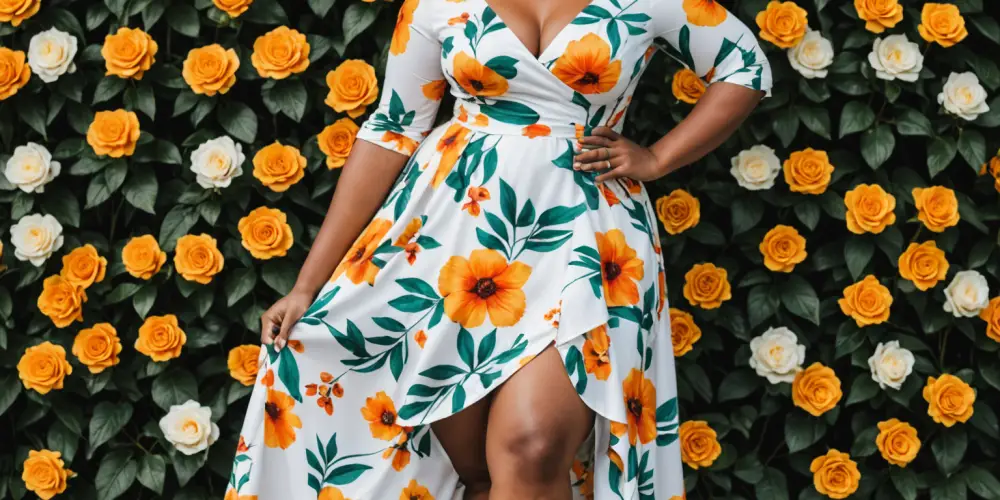


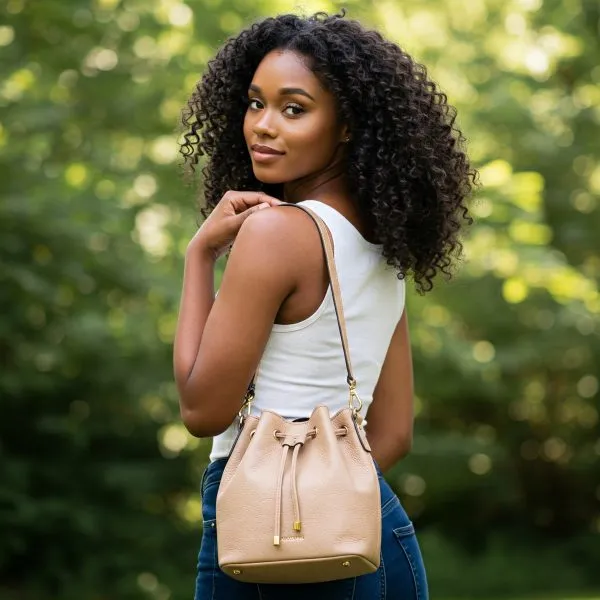

Leave a Reply